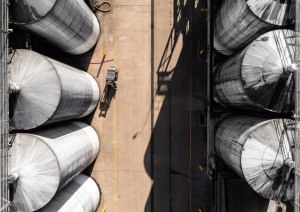New research from CSIRO and the University of Toronto in Canada estimates up to 11 million tonnes of plastic pollution is sitting on the ocean floor.
With plastic use expected to double by 2040, CSIRO says understanding how and where it travels is crucial to protecting marine ecosystems and wildlife.
Dr Denise Hardesty, senior research scientist at CSIRO, said this is the first estimate of how much plastic waste ends up on the ocean floor, where it accumulates before being broken down into smaller pieces and mixed into ocean sediment.
“We know that millions of tonnes of plastic waste enter our oceans every year, but what we didn’t know is how much of this pollution ends up on our ocean floor,” Hardesty said.
“We discovered that the ocean floor has become a resting place, or reservoir, for most plastic pollution, with between three to 11 million tonnes of plastic estimated to be sinking to the ocean floor.
“While there has been a previous estimate of microplastics on the seafloor, this research looks at larger items - from nets and cups to plastic bags and everything in between.”
Research lead Alice Zhu, a PhD candidate from the University of Toronto, said the estimate of plastic pollution on the ocean floor could be up to 100 times more than the amount of plastic floating on the ocean’s surface.
“The ocean surface is a temporary resting place of plastic, so it is expected that if we can stop plastic entering our oceans, the amount would be reduced. However, our research found that plastic will continue to end up in the deep ocean, which becomes a permanent resting place or sink for marine plastic pollution,” Zhu said.
Scientific data was used to build two predictive models to estimate the amount and distribution of plastic on the ocean floor - one based on data from remote operated vehicles and the other from bottom trawls.
Although inland and coastal seas cover much less surface area than oceans, these areas are predicted to hold as much plastic mass as does the rest of the ocean floor.
“Understanding the driving forces behind the transport and accumulation of plastic in the deep ocean will help to inform source reduction and environmental remediation efforts, thereby reducing the risks that plastic pollution may pose to marine life,” Zhu concluded.






